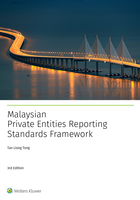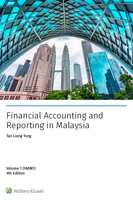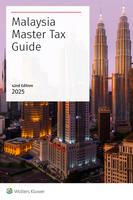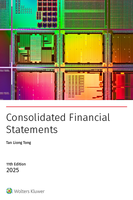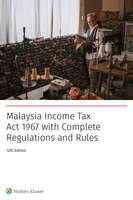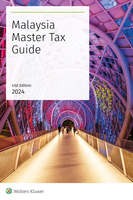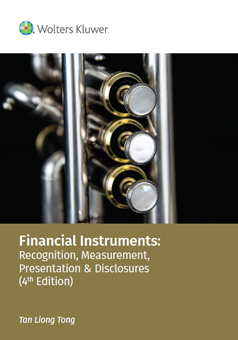
This book addresses the various Standards regarding accounting for financial instruments in Malaysia, with the objective of making the standards understandable and operational to accountants and accounting students.
With effect from 1 January 2018, these Standards are:
MFRS 9(2014) Financial Instruments
MFRS 132 Financial Instruments: Presentation
MFRS 7 Financial Instruments: Disclosures.
New in this edition
Numerous updates and developments on the financial reporting standards for financial instruments are covered in this new edition, including the new IC Interpretations, MFRSs Amendments, and additions to MFRS 9 covering classification and measurement of financial assets and financial liabilities, impairment methodology and a new hedge accounting model. It also includes more detailed discussions of accounting for some common derivative instruments and complex implementation issues of the standards, such as the expected credit loss model for impairment testing and the assessment of hedge effectiveness. Also, the new Companies Act 2016 became effective for financial year/period ended 31 January 2017 and it replaces the original Companies Act 1965 in its entirety.
Key features include:
Straightforward guide: Provides step-by-step instructions on the ways to recognise financial instruments and the various methods of measurement and presentation
Improve financial reporting: Helps users to improve proficiency in reporting their company’s financial performance
Credible and practical commentary: Authored by leading accounting professional in Malaysia, Prof Tan Liong Tong
Topics covered:
Chapter 1: Financial Instruments — Recognition and Derecognition discusses the standards on recognition and derecognition of financial assets and financial liabilities.
Chapter 2: Financial Instruments — Measurement, Reclassification & Gains and Losses discusses the measurement standards for the various categories of financial assets and financial liabilities, and the reclassification requirements.
Chapter 3: Fair Value Measurement discusses the requirements of MFRS 13 Fair Value Measurement and its application to financial instruments.
Chapter 4: Equity Share and Business Valuations explains the fundamental theories of share prices and provides guidance on estimating fair values of financial instruments.
Chapter 5: Hedging and Hedge Accounting deals with the subject of hedging and hedge accounting.
Chapter 6: Financial Instruments — Presentation deals with the presentation of financial instruments required by MFRS 132 and Section 22 of MPERS.
Chapter 7: Share Capital, Reserves and Other Equity Items supplements Chapter 6 on the presentation and deals with the statutory and other legal requirements concerning share capital and equity instruments.
Chapter 8: Financial Instruments — Disclosures focuses on the disclosure requirements of MFRS 7 and MPERS.
About the Author
Tan Liong Tong is a respected and experienced author on financial reporting practices. He has served as a project manager in working groups assigned to developing the Standards of the Malaysian Accounting Standards Board (MASB). He currently serves as a project manager of the MASB Working Group (WG 63) on Consolidation and as a Technical Consultant to Mazars Malaysia. High in demand as a consultant to various institutions and organisations, he has published numerous research articles, books, monographs and practice manuals in the field of financial accounting and reporting.
Other titles you may be interested in...
-
Malaysian Private Entities Reporting Standards Framework 3rd Edition
This edition of the Malaysian Private Entities Reporting Standards Framework aims to keep practitioners and students up to date with the current developments in the MPERS Framework. The book focuses on accounting principles and serves to guide readers on the preparation and presentation of financ...
-
Financial Accounting and Reporting in Malaysia, Volume 1 (Farm 1), 9th Edition
The 9th edition of Financial Accounting and Reporting in Malaysia (Volume 1) aims to develop knowledge and skills in understanding and applying the MFRSs, IFRSs, and MPERS. With a clear emphasis on local practices, accounting principles are discussed in detail to guide users on the preparation an...
-
Malaysia Master Tax Guide 42nd Edition 2025
The Malaysia Master Tax Guide is a practical, accurate, and dependable overview of the structure, characteristics, and scope of Malaysia Income tax law and practice. It describes how the legislation relates to individuals, companies, partnerships, limited liability partnerships, and other taxable...
-
Consolidated Financial Statements 11th Edition
The 11th edition of Consolidated Financial Statements has been meticulously updated to reflect the latest developments in financial reporting standards by the International Accounting Standards Board (IASB). This edition incorporates changes in the new IFRSs, including IFRS 18 Presentation and Di...
-
Malaysia Income Tax Act 1967 with Complete Regulations and Rules 12th Edition
Malaysia Income Tax Act 1967 with Complete Regulations and Rules is ideal for practitioners to use in the courtroom, handy as a desk or portable reference and reliable as a student text. This volume contains the full text of the Income Tax Act 1967. ...
-
Malaysia Master Tax Guide 41st Edition 2024
The Malaysia Master Tax Guide is a practical, accurate, and dependable overview of the structure, characteristics, and scope of Malaysia Income tax law and practice. It describes how the legislation relates to individuals, partnerships, limited liability partnerships, companies, and other taxable...
Prices shown are in MYR and do not include Delivery and Handling | Copyright © 2025 Wolters Kluwer




